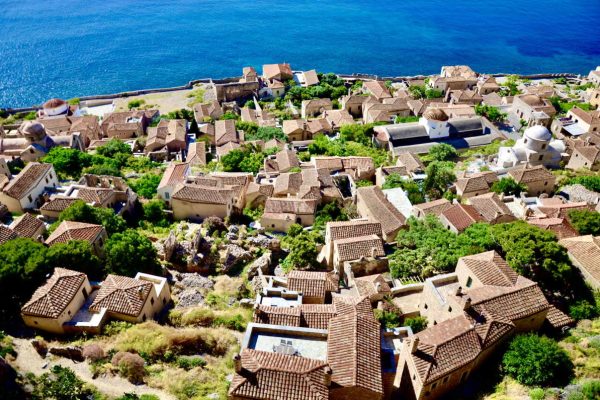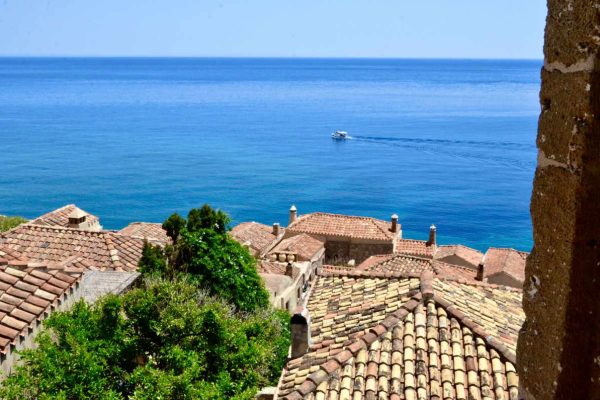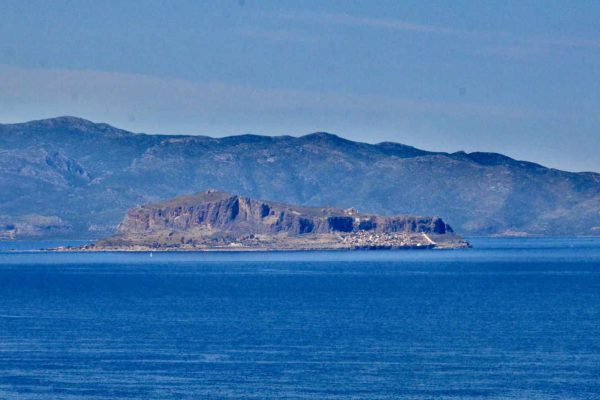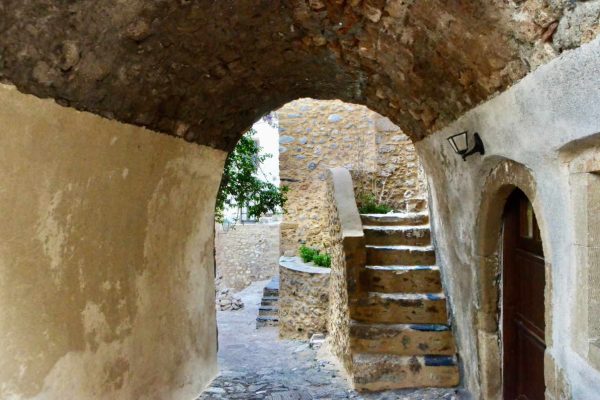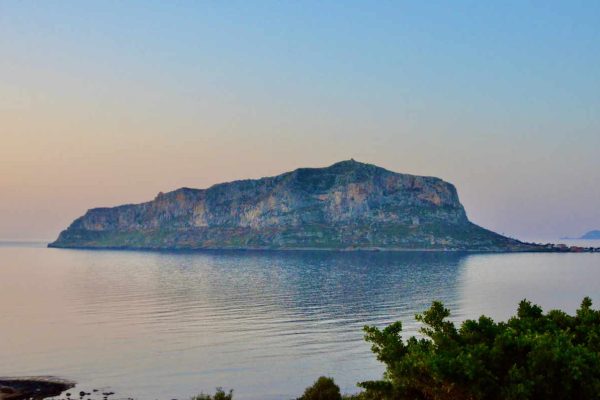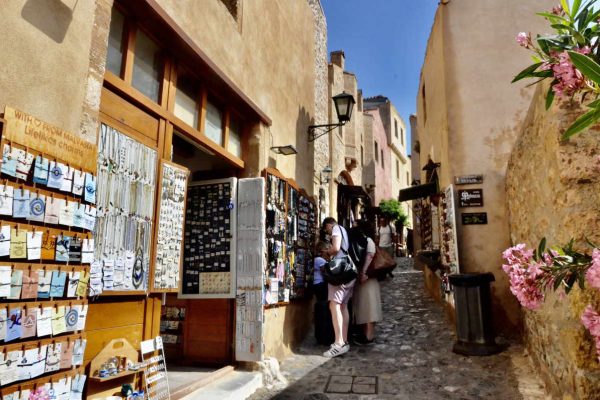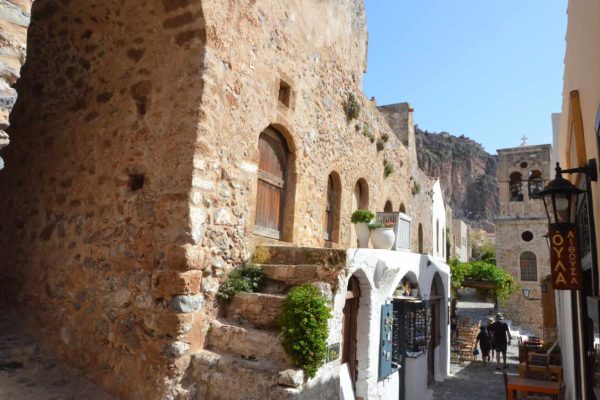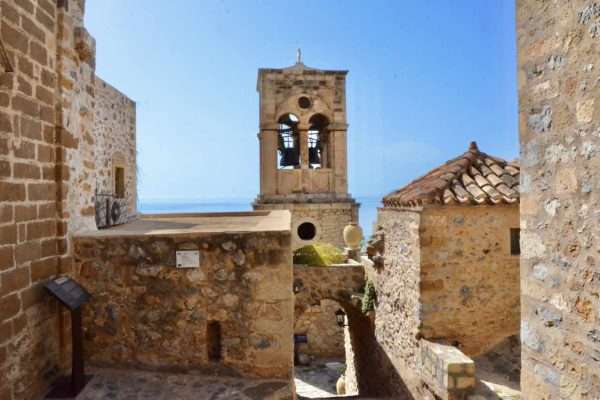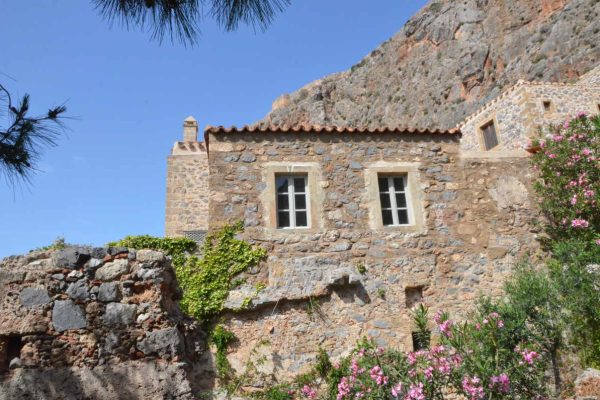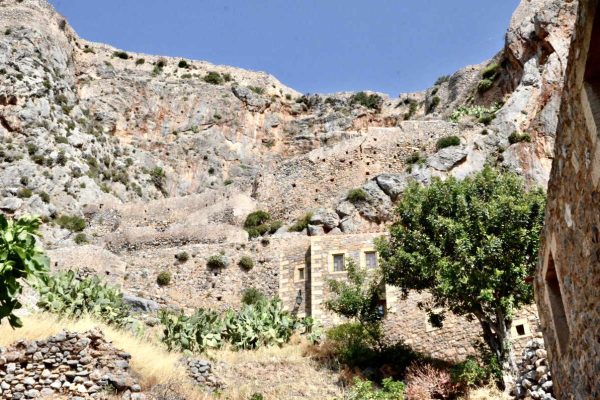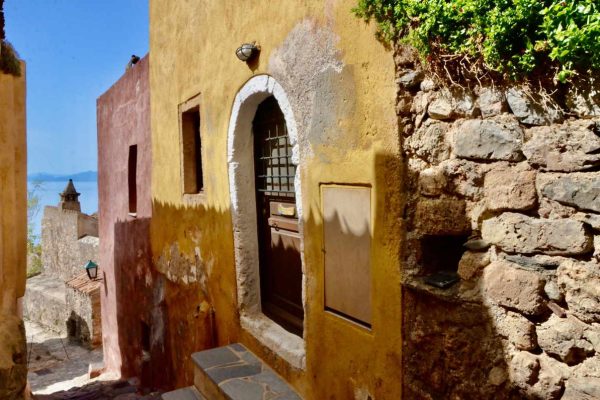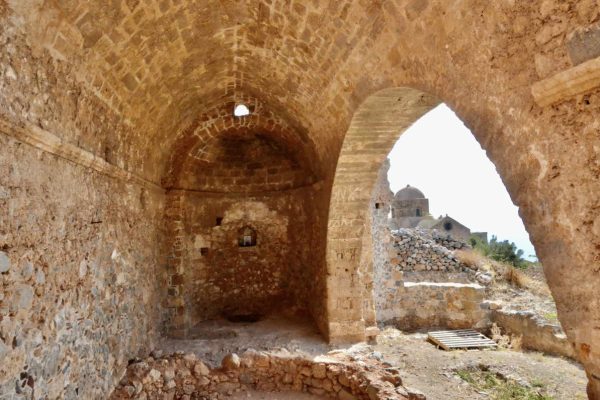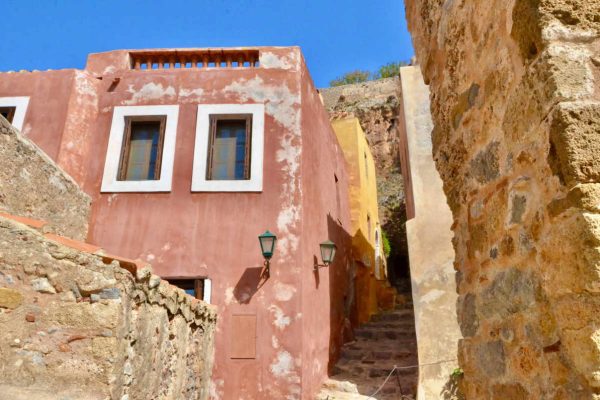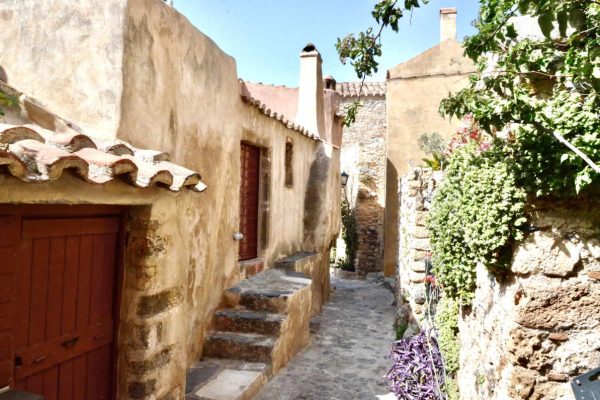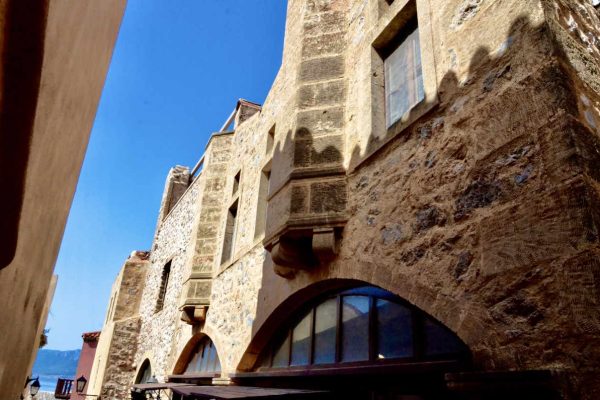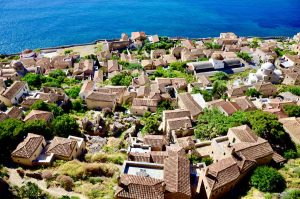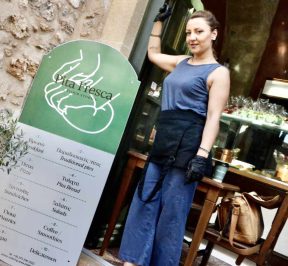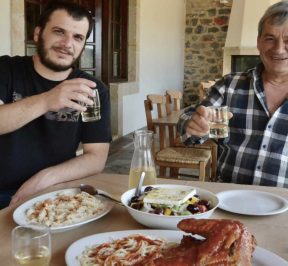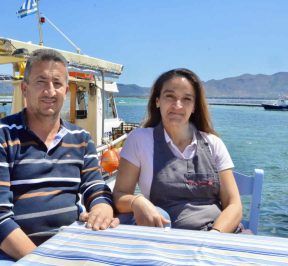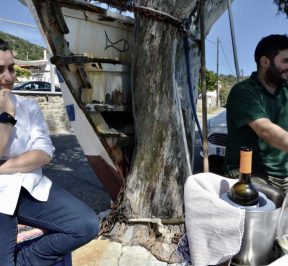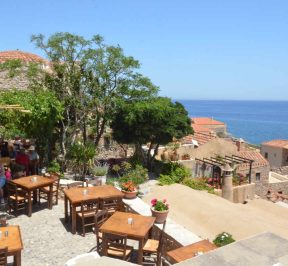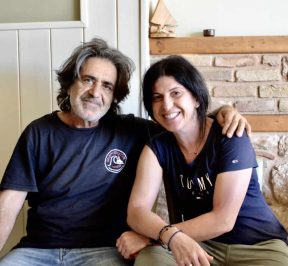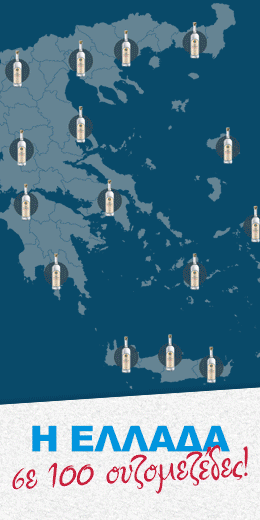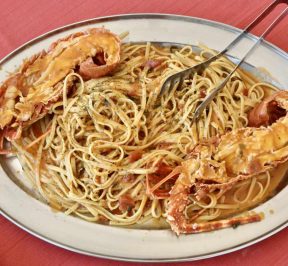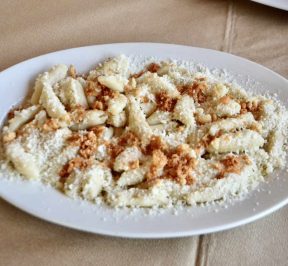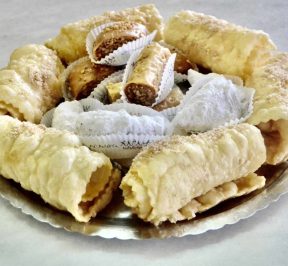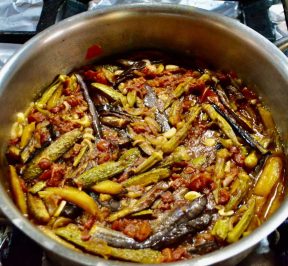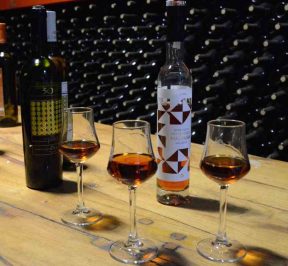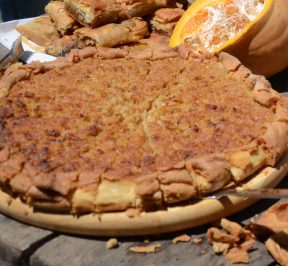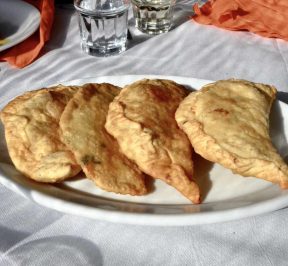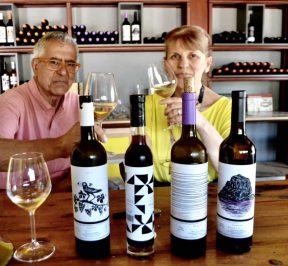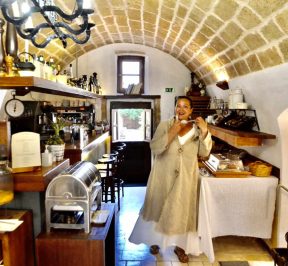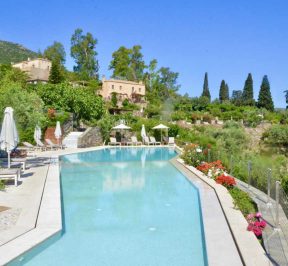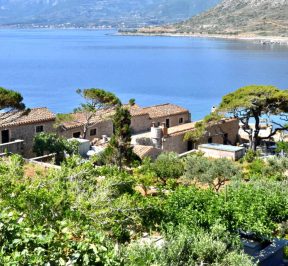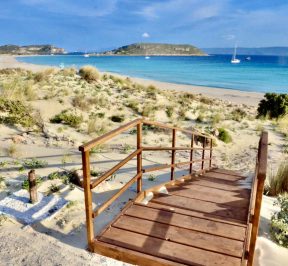Place - History of Monemvasia
Η Monembasia ή Monemvasia ή Monemvasia known to the Franks as Malvasia, is a small historical town in the eastern Peloponnese, in the Prefecture of Laconia. It is better known for its medieval fortress on the homonymous "Rock of Monemvasia", which is literally a small islet connected by a bridge in a forming neck with a total length of 400 meters to the current beach in the opposite city on the Laconian coast.
It is also called "Gibraltar of the East", because it resembles – in miniature – the Rock of Gibraltar. The name Monemvasia is a compound word, derived from the two Greek words Moni and Embassis.
H Monemvasia it was one of the most important and most historic castle-states of Greece and nowadays it is without a doubt one of the most beautiful castles in the world.
It was founded in the years of Emperor Maurice in 583, when the inhabitants of the surrounding areas were looking for refuge from the raids of the Avars and the Slavs.
The city seems to have been initially founded on the highest plateau of the peak and later expanded to the southeast, in a smooth, windless and invisible place from the Peloponnesian coast, which also has the privilege of being a key observation point for all the ships sailing the Myrtle Sea.
The settlement, although it possessed absolutely no source of water, rose to naval and commercial station for the sea routes of the Aegean. The city's harbor was double, to the north and to the south of the bridge that connected the rocky peninsula with the land opposite. From the middle of the 10th century, the city began to develop dynamically, with the spread of the settlement all over the rock.
According to the Arab geographer Indrizi, in the middle of the 12th century the city had a high wall, while a little later it became Cathedral seat. Then the castle was strengthened so much that it became a fortress that strongly resisted those who sought it, such as Roger II, king of the Normans, in 1147, and William II Villeardouin, a century later, to whose forces it finally succumbed in 1248. after the blockade of the Frankish besiegers and able negotiations for the preservation of former privileges of the inhabitants.
The city, however, returned to the Byzantines in 1262, along with the castles of Mystras, Geraki and Megali Maini, by the treaty that followed the agreement between the Franks and the Byzantines after the Battle of Pelagonia (1259). Then Monemvasia became the base of the Byzantine fleet for the reconquest of Peloponnese territories.
With gold bulls of the emperors Andronikos II and Andronikos III, administrative, ecclesiastical and financial privileges were granted that ensured perfection in the products of Monemvasia, tax exemptions and free movement of its ships, without duty obligations in the territories of the empire. Thus, the city emerged as an important administrative and ecclesiastical center and seat of great maritime and commercial traffic.
The beginning of the recession and the final collapse began in 1394, when an Ottoman garrison reported to Monemvasia, in a temporary occupation of it. In 1460, under the threat of the Ottomans, the people of Monembas asked to be placed under the protection of Pope Pius II, but at the end of 1463 they surrendered the city to the Venetians. From 1540 to 1690 the first period of the Turkish rule lasts and after the short break of the Second Venetian rule (1690-1715), the city came under the definitive rule of the Ottomans and became the capital of the vilayet of eastern Laconia.
The fortress of Monemvasia was besieged at the beginning of the Greek Revolution by land and sea and after a four-month siege it surrendered to the Greeks on July 23, 1821. Disputes over the distribution of spoils and administration ensued, which led to anarchy. These constant quarrels prevented Monemvasia from being able to play an important role in the later developments regarding the establishment of the Greek state and from not being able to acquire its old glory, and slowly being deserted and the buildings falling down.
Monemvasia continued to rely on cisterns for its water supply until 1964 and electricity arrived in 1972. Trade was carried out by coastal shipping, where products were transported to the nearest major port, Piraeus.
Only from the 1970s Monemvasia began to flourish again, this time as a tourist destination. The people of Monemvasia sold their houses to people visiting Monemvasia and restored them.
Architects Alexandros and Haris Kalliga played a key role in the restorations.
Nowadays, a tour of the Castle City of Monemvasia – the Upper and the Lower Town – will give one the opportunity to admire the reconstructed medieval buildings that now mostly serve as accommodation and restaurants. This means that in Monemvasia you have the unique opportunity to spend the night in a medieval tower or to enjoy a romantic dinner on the roof of a tower house!
In the Lower City one will discover walking, many historical buildings, among them a Muslim mosque - a listed building of the 16th century which now houses the Archaeological Collection of the settlement -, as well as remarkable Byzantine churches. Arriving in the Upper Town don't miss going up to Goula ("upper Castle") to enjoy the breathtaking, panoramic view of the city!
PLACE & HISTORY - TRADITIONAL KITCHEN


